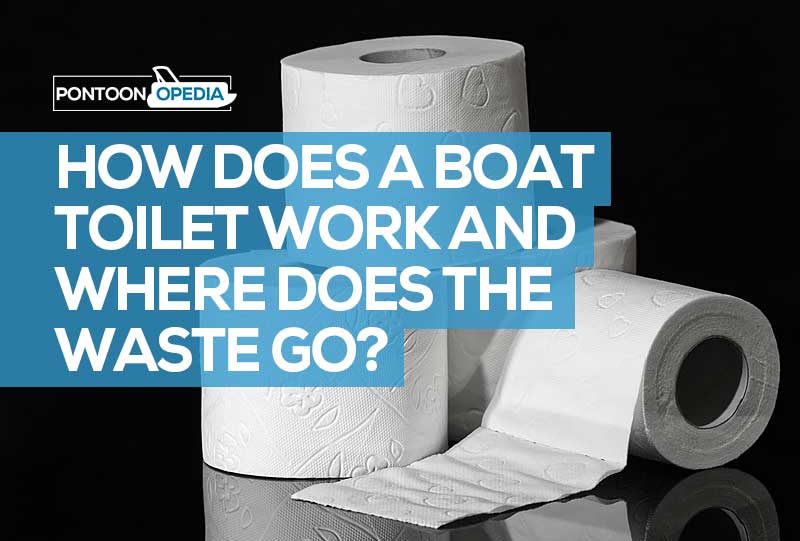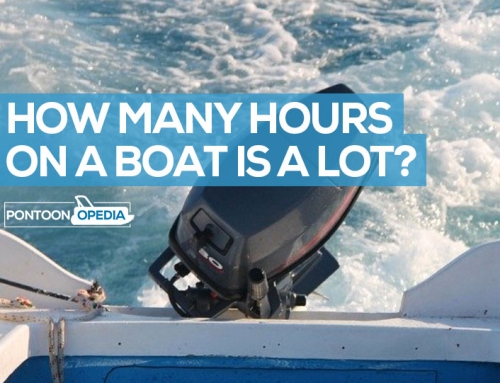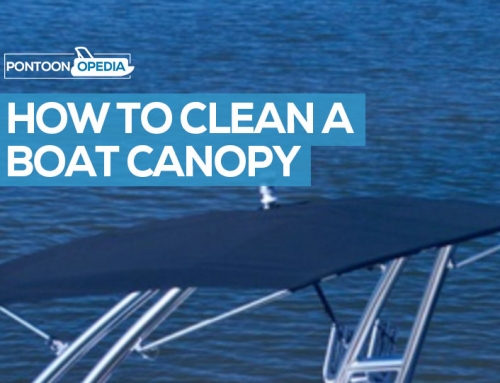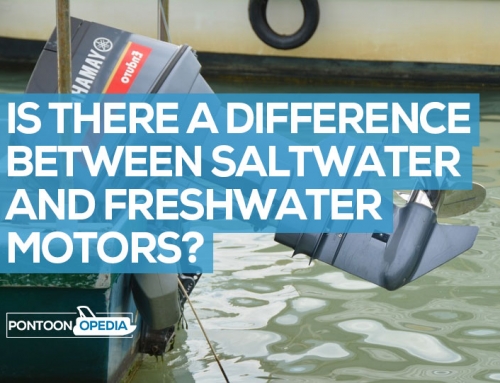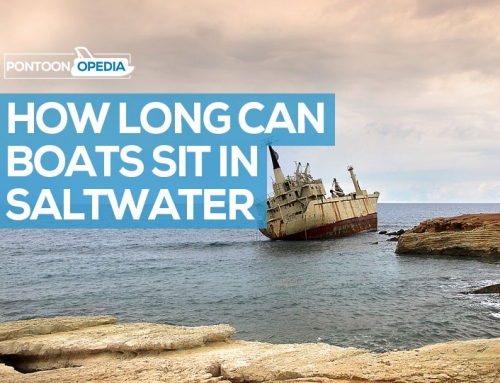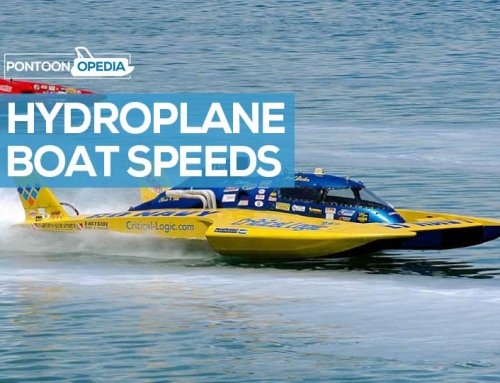When you gotta go, you gotta go. Boat toilets (commonly known as “heads”) allow you to go when you need to go, no matter where you are out on the water. But, how do they work? Where does the waste go? It’s a more common question than you might think, so I decided to give you a very quick primer to how boat toilets work and where the waste ends up.
There is no one quick answer to this, as there are various different types of boat toilet, all of which will work differently. I am going to explain about each one.
Types of boat toilets
Did you know there is more than one kind of marine toilet? There are 3 options. Each option has its pros, its cons and its differences. So, the three options for a boat toilet are:
- Cassette toilet
- Pump Out toilet
- Composting toilet
How boat cassette toilets work
Simply put, a cassette toilet consists of a toilet that has a removable waste tank that requires you to manually empty it. Literally, think of an old cassette tape being pushed and pulled out – it is the exact same thing as a waste tank, just not as often.
Cassette toilets are very affordable, simple and reliable. They require very little space or upheaval on a boat which make them the perfect option for many boaters.
There are two basic forms. One model is permanent. It will be integrated into the boat’s water system allowing it to acquire rinse water without any manual labor.
The second model is portable. This is a great option, as it can allow you to move it around and tuck it into any corner that it will fit in. Although, you have to manually fill the rinse water which is held in the seat and bowl sections of the toilet.
Did you know? I’ve reviewed the best portable toilets you can use if you own a smaller boat with no fitted bathroom system. See my portable toilet recommendations here.
One of the biggest advantages of a cassette toilet is that when it comes to disposing of the waste, you simply take the waste to a disposal point. Disposable toilet points are usually free too, so you can save a little more cash.
Unfortunately, the waste collection can get very heavy and it requires you to manually top up the rinse water reservoir. There’s also the chance of getting a little splash back when you are emptying out the waste!
If you are lucky and don’t get any splash back, having to empty out your own waste, can take a little bit of the shine off of your trip. A cassette toilet will also produce smells on board. Not nice, particularly on hot days!
Where does the toilet waste go?
Ultimately, a cassette toilet is a works the same as a toilet in your home. It has a pump chamber, a water reservoir and a waste reservoir. What will happen is that the pump chamber will dispose of the waste into the waste reservoir and then refill with the freshwater.
As you have a waste reservoir it has to be emptied and this is done manually. A cassette toilet requires you to use chemicals to minimize smells and ensure that the toilet is kept hygienic.
Once you come ashore, you must find an appropriate place to dispose of your waste. This means that you have to carry the reservoir where you waste have been collected.
You can often find a local facility for this and it is usually a free service. The waste that you collect on board has to be disposed at an appropriate facility. Then the waste will be treated and go through a variety of steps and systems for it to be reused.
How do pump out boat toilets work?
When it comes to pump out toilets, they are most like the toilets you would use in your home. However, an important note is that these toilets abandon portability as they consist of a full water and piping system.
The waste is held on board in a very large tank and has to be emptied out at a special marine pump out facility which can cost you a few dollars – but it isn’t much.
Pump out toilets are the perfect option for those who intend to live on their boats, or spending weeks/months on end out on the water. These are more expensive than a cassette toilet due to it being more complex, but many would be reluctant for anything less than this system.
There are two types when it comes to pump out toilets. There is the dump through or the remote tank. The dump through consists of the waste holding tanking sitting directly underneath the toilet. This system requires much less plumbing and pipe work.
The second option is a remote tank. This is when there is a piping system that has been put in place to transport the waste from the toilet bowl to the waste holding tank.
One of the main advantages of a pump out toilet is that it is going to last a lot longer before the waste holding tank requires emptying. Not only that but emptying out this toilet fell much more civilized.
The closest you get to your waste is watching it through a viewing window in the pump out hose. You also don’t get any smells on board as it has a more involved sewage system to prevent the buildup of smells aboard.
There are disadvantages of a pump out toilet. Besides it not being portable, it can cost you a few dollars every time your holding tank needs to be emptied.
Not only that, but if the piping system becomes blocked it needs to be addressed immediately by a professional which could put you a little out of pocket.
Although, the holding tank doesn’t need to be emptied very often – a couple who is living on their boat would rarely have to empty the tank more than once every three-four weeks.
Where does the toilet waste go?
The pump out toilet consists of a holding tank, head discharge hose, a pump out hose, a vent line and more than likely a macerator. The discharge hose takes the waste from the toilet and disposes of it into the top of the holding tank.
Usually, a macerator is also installed to chop up waste into smaller pieces before going through the piping system. This is to prevent a blockage.
A pump out hose is mandatory for the ability to use a pump out facility. It allows you to pull the waste from the bottom of the holding tank and leads it via a deck fitting at a waste disposal facility.
A vent line is a smaller hose that allows air into the holding tank. This is an important part of the system as it permits the aerobic breakdown of the waste. It also ensures that as you are pumping out the waste from your holding tank it is replaced with air.
Once the pump out facility has taken your waste from aboard your boat it goes through a variety of steps and processes to allow the water to be reused.
How does a boat composting toilet work?
As the world has become more and more environmentally friendly and aware a new option of a composting toilet has come about. A composting toilet is rising in popularity as it doesn’t smell, does not require any chemicals or cause any pollution.
This toilet consists of two holding tanks, one for solids and one for liquids, then all you have to do is add peat moss or sawdust to help the drying out process.
There are many advantages of a composting toilet as it lasts up to a month for two people with full time use. It requires very little maintenance and doesn’t use any water or power. So, you have reduced weight and fuel consumption.
Not only that, but it doesn’t require the use of any chemicals or disposal facilities – it is much easier to take care of and maintain.
When it comes to disadvantages it really comes down to height and size. As this toilet works a little differently than the previously mentioned ones, it tends to be a little larger to allow for two holding tanks and sufficient holding tank space.
Where does the toilet waste go?
A boat composting toilet uses the basics of breaking down organic matter. The waste is separated into liquid and solids. A composting toilet works by allowing oxygen to dry out and compost the waste.
Adding peat moss or saw dust assists in drying out the waste faster and preventing any potential smells.
When the waste holding tanks become full you can simply dispose of the waste by using it as compost in your garden!
Boat toilet requirements
When it comes to marine toilets they have to tick a few basic requirements. These basic requirements are:
- Ability to empty toilet bowl in a single flush.
- Ability of rinsing the bowl to minimize staining.
- Zero to minimal odors.
- Ideally minimal noise, water and electrical consumption.
- Straight forward maintenance and easy installation.
By law waste must be accumulated and kept on board until it can be disposed of properly.
If you are unsure of where a proper disposal facility is ask the local marina or so some research in advance.
Please be certain that you are not disposing or discharging any of your untreated waste within 1 nautical mile of an island, mainland or reef. This is pollution and can cause a lot of havoc on the wildlife.
Boat toilet tips
- Always use a biodegradable toilet paper.
- Use as little toilet paper as possible.
- Opt for phosphate free cleaning supplies.
- Use onshore facilities when you can.
- Keep a spare cassette or two in case you fill up the first tank before you can empty it correctly.
- Show your guests how to use the toilet correctly to avoid any issues.
- Gain some knowledge on how to do basic maintenance in case something goes wrong and you are far away from assistance.
FAQs
Why does my boat have a lingering odor that smells like the head (toilet)?
Just like anything parts aren’t guaranteed to last a lifetime.
Once parts being to deteriorate, they can leak smells. If you have a lingering odor you should do a thorough maintenance check to ensure each part is up to scratch. If a part or two is deteriorated, replace it ASAP.
What can I do about the smell outside of the boat when someone flushes?
You could consider adding a charcoal filter. The charcoal will absorb and filter smells, to minimize the smell outside of your boat when someone flushes.
The last word…
Now you know where the toilet waste goes from a boat and how boat toilets work. I bet you never thought someone would say that to you!
On a serious matter though, the type of toilet you buy for your boat does need careful consideration. I am a pontoon owner, and we have a portable job. It’s not particularly nice, but it’s the best option for us.
Think carefully before you buy!

